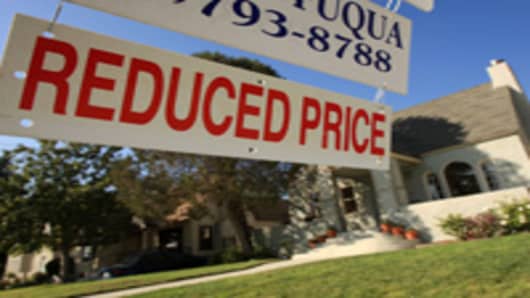Last week I wrote about how fewer foreclosures up for sale in the housing marketcould actually mean lower overall home prices.
That may sound counter-intuitive, given that we always talk about how distressed sales deflate comparable home prices.
My reasoning is that foreclosures are in high demand right now, and organic, non-distressed sellers are still not coming back to the market. Without the foreclosures, there really is no competitive market.
I hate to say, “I told you so,” but … today the National Association of Realtors reported that inventories of homes for sale in January fell to 2.31 million, the lowest supply since March, 2005. Rather than pushing home prices higher, they are still down, 2 percent, from a year ago.
The Realtors noted that 35 percent of all home sales were distressed (either foreclosures or short sales). Investor demand is high, they say, even claiming that a recent program initiated to sell the foreclosures of Fannie Mae and Freddie Mac in bulk to investors is unnecessary.
“Based on the swiftness of how REO (bank-owned) properties are moving in the market, it may not be needed,” said NAR chief economist Lawrence Yun. He did admit that such a program would also take away thousands of potential listings from Realtors.
Banks are ramping up the repossessions, as the so-called “Robo-signing” foreclosure paperwork scandal is fading and a settlement with federal and state governments has been reached. But they are not going to flood the market with these properties, for fear of losing pricing power. That’s why we are now starting to see bidding wars in some of the hottest distressed markets.
Sales of existing homes in the West, which comprise the hardest hit states of Arizona, Nevada and California, jumped 8 percent in January month to month. More than half of sales out West are foreclosures and short sales. Demand is definitely rising, but only on the lower end.
If you look at sales distribution by price, 69.9 percent of homes sold in November were under $250,000. That moved up to 72.2 percent in January. Given that there is just a two month difference, seasonality, i.e, higher priced homes selling at different times of year, doesn’t apply.
As I wrote last week, organic, non-distressed sellers are making up less and less of the overall housing market. That does not a healthy housing market make. Without good, move-up homes available, the market cannot see real price appreciation.
“The main limit on sales volume now is willing sellers, not willing buyers,” says Glenn Kelman, CEO of Redfin, a real-estate brokerage.
Questions? Comments? RealtyCheck@cnbc.comAnd follow me on Twitter @Diana_Olick



